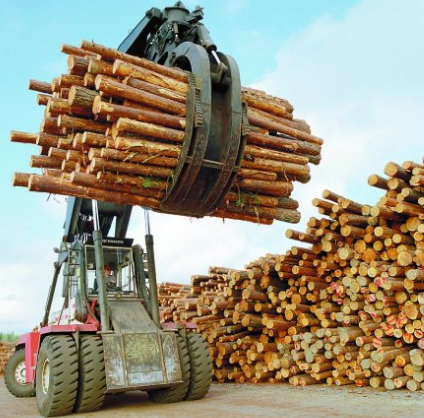
Timber prices in the USA rise to a 3-year high. This is due
to the tariffs of 40% on Canadian timber imports. European
suppliers are still benefiting from the price increase and the
huge supply gap. But this could change quickly.
Lumber prices in the USA have risen to USD 680 per thousand
board feet, continuing their two-and-a-half-year high. This is
due to the additional tariffs announced for lumber imports into
the USA.
The increases planned by the US administration could cause
Canadian lumber tariffs to rise from around 15 % to almost 40 %.
This would also be an extremely price-driving factor for the US
market, as Canada supplies around 25 % of US sawn timber - even
if some of the production has apparently been relocated to the
south of the USA, say analysts.
The ongoing supply bottlenecks - exacerbated by transport delays
and hoarding purchases - are causing sawn timber prices to rise
further amid continued uncertainty on the markets. At the same
time, supply remains tight as production cuts in Canada - due to
sawmill closures - have reduced North American softwood lumber
capacity by 3.1 billion board feet, according to
Tradingeconomics analysts.
As a result, construction companies have already stockpiled
lumber, a strategy that has already driven up prices on the US
domestic market. In anticipation of further trade restrictions
and supply chain disruptions, sawmills in the US have already
increased prices by 25 to 65%, setting the price spiral in
motion.
Timber shortage in the USA - imports from Europe?
The consequences of the tariff increases for the US lumber
market would be serious. On 13 August 2024, the US Department of
Commerce published the results of its fifth annual
administrative review of the anti-dumping (AD) and
countervailing duty (CVD) on Canadian lumber exports.
The review set a new combined duty rate of 14.54% for most
Canadian lumber exports, nearly doubling the previous rate of
8.05%.
ResourceWise analysts estimated that approximately 1.3 billion
board feet of lumber capacity in British Columbia is at risk due
to the tariffs. The additional costs make it almost impossible
for Canadian producers to sell lumber profitably to the US.
Canada supplies up to 30% of the USA's softwood lumber, a share
that America can only replace with difficulty. Existing tariffs
on Canadian lumber have already helped to increase US
production.
But to fully replace foreign imports would require the
construction of several new sawmills to convert lumber into
building materials, which ¡®would run into all kinds of
constraints,¡¯ said Crystal Gauvin, senior economist at Forest
Economic Advisors.
Germany also affected by new tariffs?
In the past, when US demand could not be met in Canada, Pacific
Northwest (PNW) lumber producers stepped in to fill the gap,
followed by imports from Scandinavia and Europe (Germany).
Currently, European lumber imports account for about 6% of US
lumber demand. Both PNW producers and European exporters could
benefit from higher tariffs. Unless European exporters are also
subject to additional tariffs in the future. On 21 February,
Trump instructed US Trade Representative Jamieson Greer to
reopen investigations aimed at imposing tariffs on imports from
countries that levy digital services taxes on US technology
companies.
Canada would again be in the firing line for such penalties, as
would European countries such as France, the UK, Italy, Spain,
Austria, Germany, as well as India and Turkey. Trump also
ordered new steps within 90 days to improve the domestic timber
supply by simplifying the permitting process for timber
harvesting on public lands.
The order requires new agency guidelines. Peter Navarro, White
House trade adviser, said the timber import investigation will
counter the actions of major timber exporters such as Canada,
Germany and Brazil.
Source:
agrarheute.com